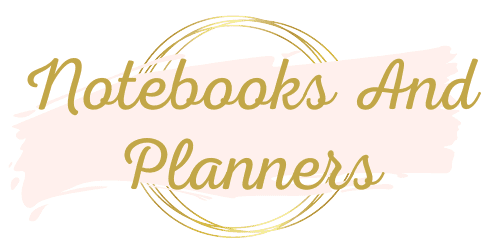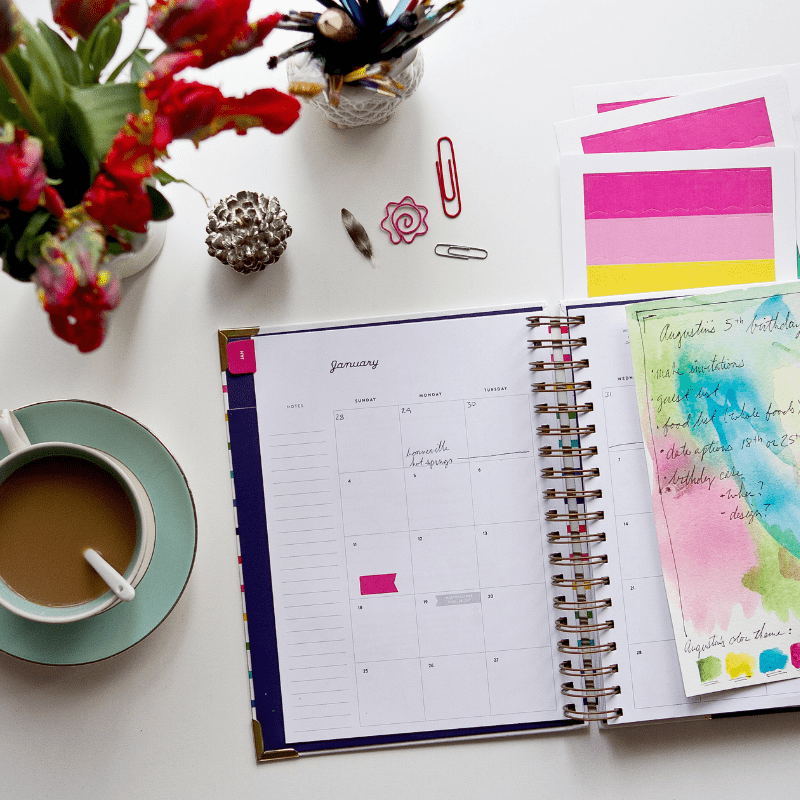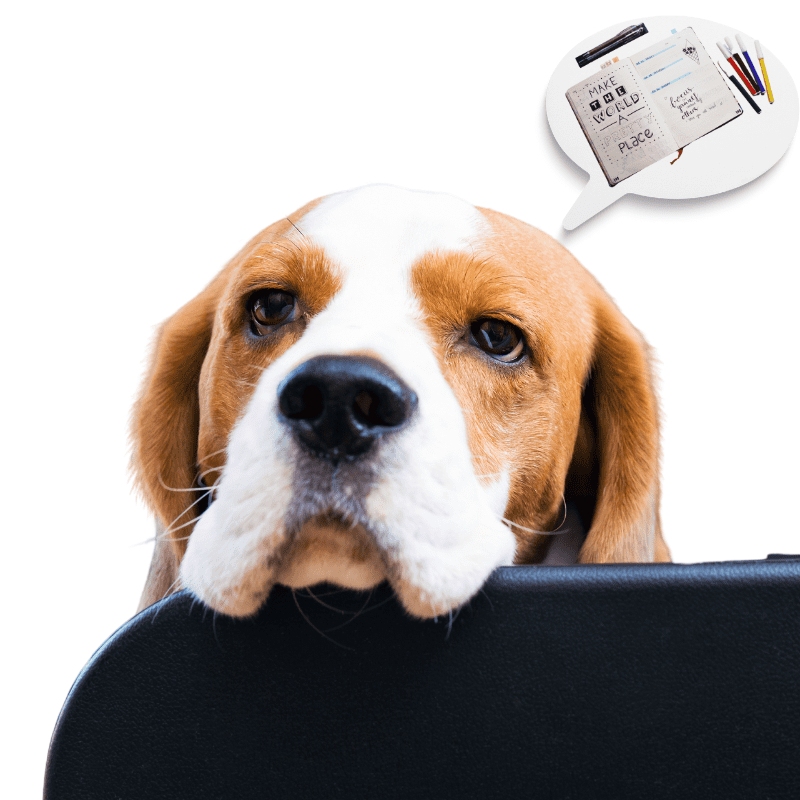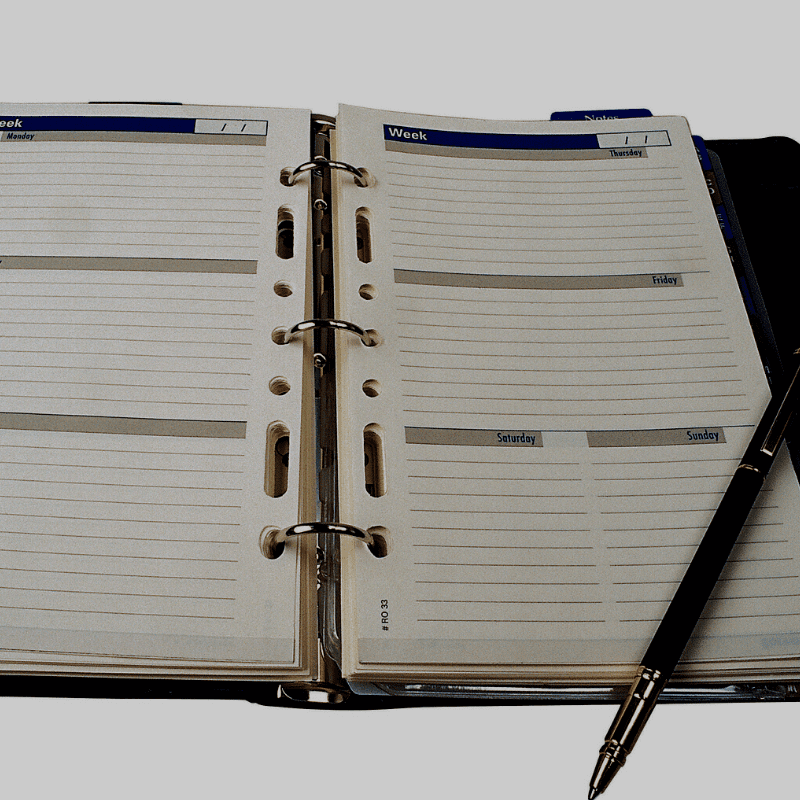Last Updated on April 27, 2022 by Jen
There are many benefits to using a planner effectively. When you use a planner to plan your day, week, and month, you can ensure that you are completing all of the tasks that you need to do. The same thing goes for your life’s goals. You can also make sure that you are not overscheduling yourself and that you have time for relaxation and fun. Additionally, using a planner can help you stay organized and on top of all your responsibilities. Using a planner effectively feels good at the end of the day. To use a planner effectively, there are several key strategies that you can implement.
1. Break Down Your Goals And Insert Them Into Your Planner
The first thing to do is to create clear goals and break those goals down into smaller, more manageable steps. This will help you stay focused and motivated as you work towards achieving your larger objectives.
When you are trying to achieve a goal, it is important to write it down and insert it into your planner. This will help you stay focused and make sure that you are completing all of the necessary steps to achieve your goal.
You can do this by:
- Marking your deadlines for your long-term, medium-term, and short-term goals into your planner’s calendar.
- Labeling and writing your goals and their tasks in different colors. This will help you distinguish them from other tasks and make sure you are working on the right goal.
- Breaking your goals down into smaller steps and writing these steps into your planner. This will help you track your progress and ensure that you are making progress towards your goal.
- Dedicating specific days of the week to work on certain goals. For example, if you have a writing project, you can dedicate Mondays and Wednesdays to writing and leave Tuesdays and Thursdays for editing.
By using your planner in this way, you will be able to effectively track your goals and make sure that you are making progress towards them. Additionally, by seeing your goals written down in front of you, you will be more likely to stay motivated and focused on achieving them.
2. Keep Track Of Habits
It is helpful to include a habit tracker in your planner. This will allow you to track your progress toward establishing new habits. Especially habits that relate to your goals.
You can find free printable habit trackers online, or you can make your own.
If you choose to make your own, there are a few different ways to do this.
One way is to draw a grid on a piece of paper and then divide the grid into squares. In each square, you can write the name of the habit you are trying to establish and then track how often you perform that habit.
Another way to create a habit tracker is by using symbols. For example, you could use a water glass for drinking water and then a water glass with an X through it for every time you don’t complete the habit.
3. Put Your To-Do Lists In Your Planner
What do you need to do today, this week or this month to accomplish your professional and personal goals?
When it comes to adding a to-do list to your planner, there are a few different ways that you can do it.
One way is to simply write out your to-dos on a piece of paper or in a notebook, and then add that to your planner.
Another way is to use a pre-made to-do list template that is specifically designed for planners. This works well if you have something like a Happy Planner where you can remove and add pages.
And finally, some planners come with built-in to-do lists, which allow you to easily add and keep track of your tasks.
No matter how you choose to add your to-dos, be sure to make them specific and actionable. For example, instead of writing “study for test,” try “read chapter 5 for test.” This will help you better stay focused on the task at hand, and it will also help to keep you accountable for your progress.
4. Break Down Larger Tasks In Your Planner
Another key strategy for using your planner effectively is to break down larger tasks into smaller, more manageable steps. This can help you feel less overwhelmed by long-term goals or projects, and it can also make it easier to track your progress towards those goals.
For example, instead of writing “lose weight this week,” try “work out for 30 minutes three times this week.” and the plug those 30 minutes into the time slots you want to work out. The same goes for any tasks you want to complete for the week for work.
5. Go Over Your Planner Regularly
Be sure to review your planner regularly and make adjustments as needed. This will help you to stay on track with your goals and ensure that your planner is working for you.
If you find that you’re not using certain features of your planner, or if certain tasks are no longer relevant, don’t be afraid to make changes. Your planner should be a flexible tool that adapts to your needs over time. The more compatible your planner is with you, the more effective it is going to be for you.
6. Schedule Your Time Effectively
Another effective strategy is to schedule time for different tasks throughout the day rather than winging it.
For example, if you have a big project that requires a lot of focus, try reserving a few hours each morning or afternoon for working on this task specifically. This will ensure that it gets done without taking up too much time from other important activities.
If you don’t schedule your time effectively in your planner, then it’s easy to try to do too much or too little. By inserting tasks in time slots, you can see just how much you can get done and how much you need to get done, which reduces overwhelm and procrastination.
7. Schedule Personal Time Into Your Planner
Additionally, it is important to schedule time for breaks and ‘me time’ in your planner. This will allow you to take a step back from your work and give yourself the mental space that you need to recharge and refocus.
For example:
1. Schedule a break for every hour that you work.
2. Schedule a break after completing a task.
3. Schedule dedicated time for yourself each day.
8. Write Affirmations In Your Daily, Weekly, And Monthly Areas
This may not be something that a lot of people think of when it comes to using their planner effectively, but it’s important. You are constantly affirming stuff to yourself, and sometimes those affirmations don’t match up with what’s in your planner.
For instance, if you have a busy week where you need to do more than usual, and you are affirming to yourself that it’s too much work, then you are going to have a hard time checking off everything in your planner. But, if you write in an affirmation that keeps you focused on what you need to do for the week and in a mindset that you can do it, such as, ‘I can accomplish everything I set out to do this week!’ you have a better chance of getting things done.
Affirmations are very specific to you and your day, week, and month ahead. Take a look at your schedule, goals, habits, and whatever else you put into your planner, and then create affirmations that excite and motivate you.
9. Include Your Responsibilities In Your Planner
You can also use your planner effectively by scheduling time for your responsibilities.
In fact, you might want to plug your responsibilities in before anything else into your planner so that you don’t overschedule yourself with work, goals, and habits and have no room for things that need to get done. Things like taking care of your home, going to appointments, seeing friends, and spending time with family. You can also schedule time for your hobbies and interests.
Doing this will help you make the most of your time and ensure that you’re getting things done that are important to you.
10. Track Your Progress
Another great way to use your planner effectively is to track your progress. This can help you stay motivated and on track with your goals.
You can do this by keeping a list of your goals in your planner and checking off each one as you complete it.
Or you can write in how far you’ve come to motivate you to keep going. This will help you see how far you’ve come and how close you are to achieving your goals.
Things to keep in mind:
1. Make a list of your goals and track your progress towards them either by writing in how far you’ve come or by checking off everything you’ve done towards your goals.
2. Write down how you feel after completing each goal. This can help you to keep making more progress.
3. Celebrate your accomplishments! Even the small things! Feeling like you are getting things done and celebrating them motivates you to keep making progress.
Make Your Planner Your Best Productivity Tool
These are 10 great ways you can use a planner effectively and make the most out of this powerful tool. With a little bit of practice, you’ll be well on your way to achieving all of your goals and achieving the life you want… with the help of your planner.





